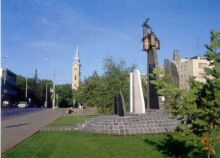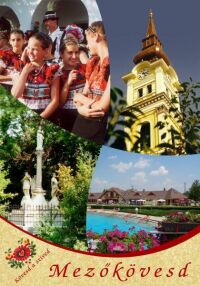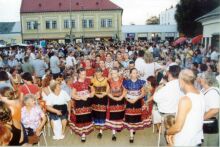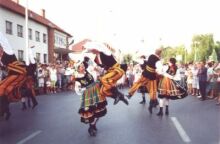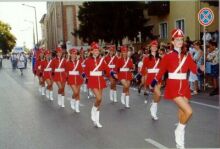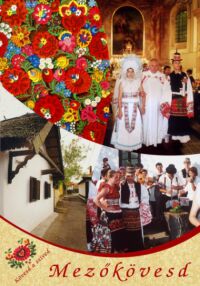E X P L O R E M A T Y Ó F Ö L D A N D I T S S U R R O U N D I N G S |
||||||||||
|
||||||||||
| |
||||||||||
Mezőkövesd
![]()
The Matyós
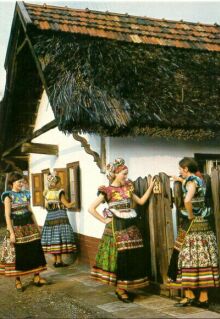 |
||
The inhabitants of Mezőkövesd and the neibouring places, Szentistván and Tard, are called Matyós. With their colourful national costumes, famous folk art, traditional life, they formed a special ethnographic unit, and – in same ways – they do today. The women stylized with an instinctive artistic sense the splendid, colourful field and garden flowers, roses and tulips, they drew and embroidered them on domestic canvases, bed-covers, table clothes and clothes.
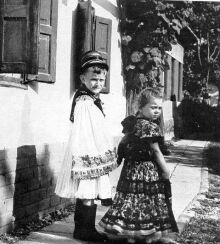 |
||
Their work shows a wonderful word of forms, and culture of colours. The colourful Matyó patterns can be seen on the decorative equipments, painted furnitures, glazed spoons hanging on the walls, earthen vessels. Matyó folk art, which is present today, deservedly proves the respect of tradition and creativeness of this hardworking and skilful people.
![]()
Main Sights
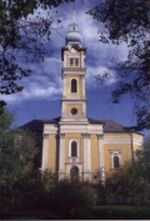 |
||
The ’Big Church’ is situated in Szent Laszló Square, built in the 18th century, whose ribbed vault chapel is the remainder of the 15th century church. The wall of the church is decorated by István Takács, born in the town, whose fresco represents a pilgrimage.
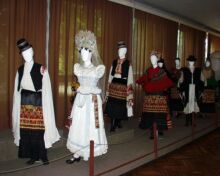 |
||
In the Matyó Museum we can get acquainted with the Matyós’ life, their festal customs and the Matyó embroidery itself.
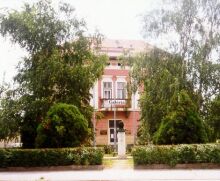 |
||
The Town Gallery is in one of the most beautiful building of the town. You can see pictures of István Takács and József Dala, excellent painters of the town, the works of János Papp ceramist, and periodic exhibitions.
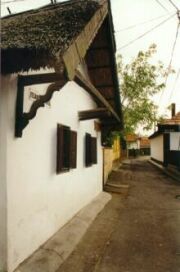 |
||
Hadas is a short walk from Szent László Square. It is a quarter which guards the one-time aspect and structure of the town. The houses built in small building sites with their white-washed walls and thatched roofs guarded in their original state and the irregular winding streets faithfully render the feel of the quarter half a century ago.
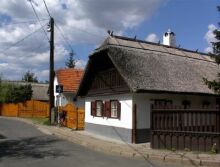 |
||
You can visit the Creating houses which show period trades; here you can see pottery, textile and lace-making workshops, handpainted kitchen and room furnitures, embroidery art works. In the middle of the place you can find the Dance barn where the visitor might as well watch a merry wedding dance. The former home of Bori Kisjankó, folkartist died in 1954, is also in Hadas. The house is now a museum, where a memorial room is furnished.
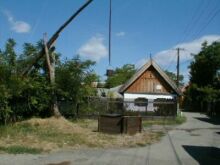 |
||
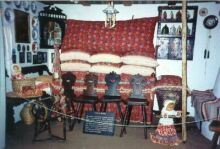 |
||
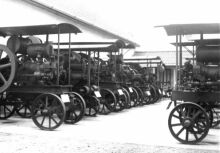 |
||
The Agricultural Machine Museum is at 32 Eötvös Street. It is a uniquely rich agricultural and technical history collection, known in all Europe, the founder of which is János Ráfis. More than 150 machines, tractors, steam engines, locomobils and stable engines represent in a wide choice the development and application of motor technology at the beginning of the century in the former agriculture.
![]()
Programs
|
Matyó-land Summer, which is organized every summer, has serious traditions: the folk dance festival is a special attraction and so is the festival of brass bands and majorette groups. | ||||||||||||
|
|
![]()
Links
|
|
![]()

